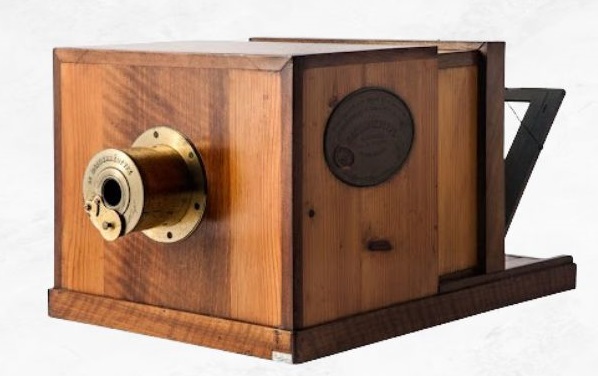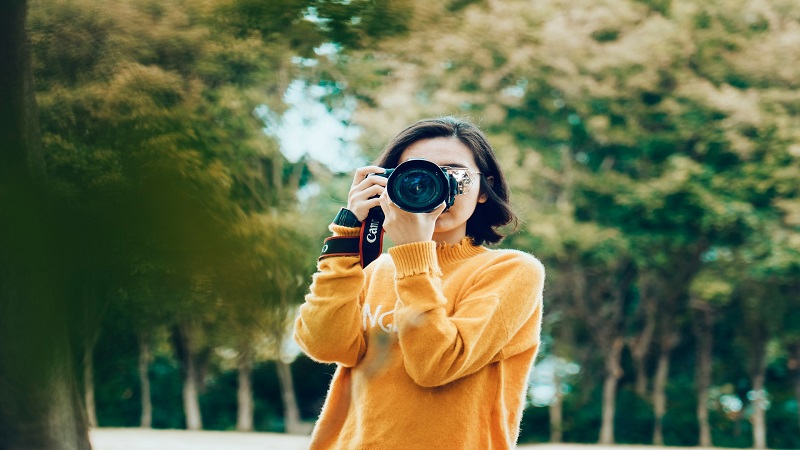The impact of photography on history is overwhelming. People would have remembered the important events in history quite differently if it was not for the invention of photography some 200 years ago. The early black and white and grainy photos were the first-ever method to capture places and people in real time. Photography changed the way historians used to document history. Similarly, it brought about massive social change by influencing public opinion. In this article, we are going to discuss how has photography changed the world for good.
A Brief History of Photography
It became quite clear that photography was a means for the common folks to be remembered right after the first photograph was taken in 1826 or 1827. Before that, a common man has to do something noteworthy or carve his name into a famous monument to leave his mark on history. However, photography made it possible for everyone to have their portraits taken.
As Danish Philosopher Soren Kierkegaard remarked about photography in the 19th century, “With the daguerreotype, everyone will be able to have their portrait taken – formerly it was only prominent – and at the same time everything is being done to make us all look exactly the same, so we shall only need one portrait.” Keep in mind that the daguerreotype was the first successful photography model, introduced by Louis Daguerre in 1837.
Soren Kierkegaard was right about everyone being able to take their photographs. However, he couldn’t be more wrong about looking the same and thus needing only one portrait. Photography has helped millions of people explore the richness and diversity of the world around them. It has highlighted how the world is different in so many ways instead of emphasizing the uniformity of life.

Photography was all about Taking Portraits Initially
Please note that photography was originally a medium to take portraits only rather than a tool to explore diversity. And, everyone in the portraits did look the same. People would pose expressionlessly for their portraits because they were very expensive in the beginning. Nobody wanted to ruin a portrait with an odd expression. Similarly, people would only wear fancy clothes and avoid everything that could ruin the final image.
It was also difficult for both photographers and their subjects to use the technology itself. The original cameras were too big and heavy. Photographers have to load a single silver-plated sheet coated with numerous chemicals in their cameras. There were no flashcards with a capacity of thousands of images or a convenient roll of 24 exposures. People also had to stay perfectly still because of agonizingly long exposure times ranging from a minute to 15 minutes.
How has Photography Changed the World?
You would be surprised to learn that dead people were the subjects in some of the best images from the early era. Only the dead were able to hold a pose for such a long time to create a focused image.
It has become a breeze to create portraits in the 21st century. Photographers can try multiple times to create perfect portraiture. They no longer have to nail the job in one try. We can take a countless number of images in the modern digital era. Similarly, cameras have become so common that everyone has them on their computers, smartphones, and other devices. Even DSLRs and point-and-shoots have become too ubiquitous.
Photography Explores Diversity and Richness
But how has photography changed the world? To begin with, modern photography equipment offers so many opportunities. We no longer need to have stern expressions and hold rigid poses while getting our portraits captured. We can explore and search for something extraordinary and unique just by having the ability to take hundreds of photographs in one sitting. It is a big departure from the search for uniformity that was the trademark of the first few decades of photography. We can also now record fleeting expressions thanks to the fast exposure times. Similarly, we can add all the expressions, mystery, joy, or anything we need in the images because of the ability to shoot in all light conditions.
Yes, Kierkegaard was spot on with his prediction. Photography is not only the domain of the rich and prominent. Everyone can have a camera and take as many images as he likes. However, modern portraits are not all the same. Every image or portrait is different from others. Every expression, every movement, every moment is different. It is one of the many ways photography has changed the world. After all, no one wants to miss the chance to see the world through his or her eyes.
Photography offers Accuracy
Another way photography has changed the world is by making it smaller than ever before and bringing us closer together. Now, you can see the real thing even if you are living in another corner of the world. In simple words, photography has provided us with accuracy and truth.
Most of us are not good at painting. We cannot use the pencil or brush to create what our mind sees or thinks. However, even the best of the artists only present an interpretation of reality in their sketches and paintings.
Photography is different from paintings and sketches. Photos always have a layer of truth even though you can use a lens to create effectors or manipulate images in Photoshop or post-processing. Unlike paintings, every image captures a real and true scene unfolding in front of the camera.
That brings us to accuracy. Artists who specialize in photorealistic techniques do their best to be accurate while painting events like cases in courtrooms. However, their work cannot be as accurate as a simple, unprocessed photograph no matter how detailed it is. Maybe the artist has taken some liberties with the scene or the colors he has used don’t represent the truth accurately. An image or photo, even taken by a novice photographer, will always show the truth. It will also present every single detail whether big or small accurately and explain what exactly happened.
Photography Makes the World Smaller
Apart from truth and accuracy, photography has made the world too small. Nowadays, we can easily look at the things happening thousands of miles away. However, this wasn’t the main focus of photography in the early years. But it caught people’s fancy when photographers in foreign lands started capturing strange sights easily and inexpensively and sending them back home for people’s viewing. They couldn’t see such unusual things without the invention of photography.
This is, in fact, one of the most amazing facets of photography. For example, how many of us have been to an actual battlefield? But – we can still see the harrowing war images and see its truth thanks to the brave photographers who have. We cannot travel back in time to see all the amazing events that occurred at the turn of the twentieth century. However, we can have a sense of how people lived during that time because of a huge collection of photos from that era.
Every one of us can go through these photos and look at famous monuments, rare animals and plants, and important events that are otherwise impossible to experience personally. We should be thankful to the photographers who took the pain and document these things for us.
How has Photography Changed in the Last 10 Years
Photography has changed quite a lot in the last 10 years. Gone are the days when you needed to have a camera to take photos. Similarly, you no longer need to be a photographer to capture your memories. The advent of smartphones has put a decent camera in every person’s pocket. Some of these phones can rival the image quality offered by basic cameras. Smartphones have become the primary source of photography.
Photography has become more accessible to a broader audience, enabling more people to capture high-quality images without the need for specialized equipment. Nowadays, you can even take professional grade pictures even if you have never touched a camera in your life before.
The Social Impact of the Change
The changing photography landscape also has had compound social effects. Now, it has brought the world closer by making it easier to take photos on the go and share them instantly with your loved ones. The ease of capturing and sharing photos has facilitated the rise of visual-centric social media platforms like Instagram, Snapchat, and TikTok. These platforms have not only changed the way we share and consume visual content but have also influenced social dynamics, personal expression, and even marketing strategies.
The omnipresence of cameras has led to a culture of constant documentation and sharing, affecting privacy norms and contributing to the phenomena of “selfie culture” and influencer marketing. This shift has also raised concerns about digital manipulation and its impact on body image and reality perception, highlighting the complex interplay between technology, society, and culture in the realm of photography.
How has Portrait Photography Changed Over Time?
Portrait photography has evolved dramatically from its inception. Initially, it was a formal and lengthy process due to the limitations of early photographic equipment and techniques. Long exposure times required subjects to remain still for several minutes, leading to stiff and posed images. With the advent of faster film, flashbulbs, and eventually digital sensors, the process became much quicker and more dynamic.
Modern portrait photography benefits from technological advances such as autofocus, high ISO performance, and digital post-processing, allowing for a range of styles from candid to highly stylized images. The art of portraiture has become more experimental, with photographers exploring creative lighting, unique compositions, and diverse contexts.
Socially, portrait photography’s transformation has impacted personal identity and social representation. In the past, portraits were often reserved for the affluent, serving as status symbols. Today, they are part of everyday life, with people from all walks of life using portraits to express themselves on social media platforms.
The selfie phenomenon, facilitated by front-facing cameras on smartphones, has introduced a new form of self-portraiture that’s widely practiced. This accessibility has democratized personal representation, allowing individuals to control their image and narrative, reflecting broader trends in society regarding individuality and diversity.
Also Read: How Do I Know If A Lens Is Compatible With My Camera?
Frequently Asked Questions
How photography can change the world?
Photography can change the world by capturing moments that convey powerful messages, influencing public opinion, and sparking social change. It freezes history in a frame, allowing for communication across different cultures and generations, and can be a tool for advocacy and raising awareness on global issues.
What impact did photography have on the world?
Photography’s impact on the world is profound; it has democratized information sharing, allowed for the documentation of historical events, and given rise to photojournalism. It has made visual storytelling accessible, fostering empathy and understanding by showing perspectives that might otherwise go unseen.
How photography has changed the art world?
In the art world, photography has revolutionized the way we perceive and value art. It introduced a new medium, challenging traditional art forms and concepts of creativity. Photography brought about new genres and movements, allowing artists to experiment with technology and expression in unprecedented ways.
How did the invention of photography change the world?
The invention of photography changed the world by providing a new means of documentation and communication. It allowed for accurate visual records, changing the fields of science, history, and journalism. It also influenced the social fabric by making personal memories tangible and immortalizing public milestones.
How does photography impact people?
Photography impacts people by preserving personal and collective memories, shaping identities, and influencing emotions. It can inspire and educate, allowing individuals to share their experiences and view the world through others’ eyes. Photography’s ability to capture and evoke emotion makes it a powerful medium for storytelling and connection.
Final Thoughts
Finally, our world would have been different without photography. It would certainly be not as rich, colorful, diverse, and beautiful as it is. Therefore, you must be proud every time you take a photograph because it can bring us closer and change the world.

